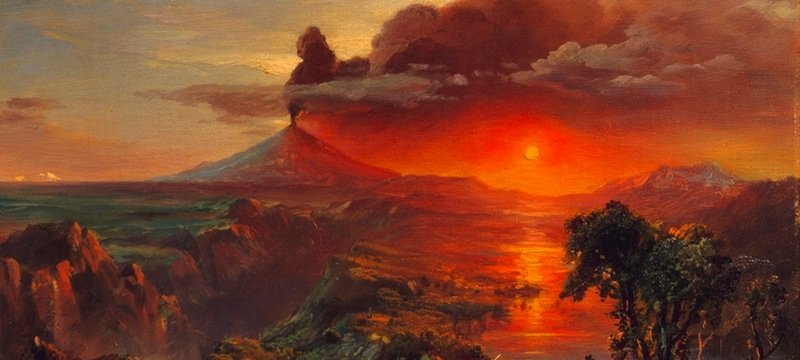A supervolcano is any volcano capable of producing a volcanic eruption with an ejecta volume greater than 1,000 km³ (240 mi³).
Volcanic eruptions are classified using the Volcanic Explosivity Index, or VEI:
VEI 8 eruptions are colossal events that throw out at least 1,000 km³ (240 mi³) Dense Rock Equivalent (DRE) of ejecta.
VEI 7 eruptions eject at least 100 km³ (24 mi³) DRE.
This eruptions typically cover huge areas with lava and volcanic ash and cause a long-lasting change to weather (such as the triggering of a small ice age) sufficient to threaten species with extinction and are so powerful that they often form circular calderas rather than cones because the downward withdrawal of magma causes the overlying mass to collapse and fill the void magma chamber beneath.
Order from the most recent date.
1. Mount Tambora (Indonesia)
This eruption took place in 1815. The following year, 1816, became known as the Year Without a Summer.
Years ago: 197
Ejecta Volume: 160 km³ (VEI 7)
2. Baekdu Mountain or Changbai Mountain (China / North Korea)
Years ago: 39,280
Ejecta Volume: 500 km³ (VEI 7)
11. Rotoiti Ignimbrite (New Zealand, North Island)
Years ago: 50,000
Ejecta Volume: 240 km³ (VEI 7)
12. Lake Toba (Indonesia, Sumatra)
The disputed Toba catastrophe theory (if true, could have eradicated 60% of human population).
https://youtu.be/-kPsxcG-qBw
Years ago: 74,000
Ejecta Volume: 2800 km³ (VEI 8)
Source – Wikipedia
